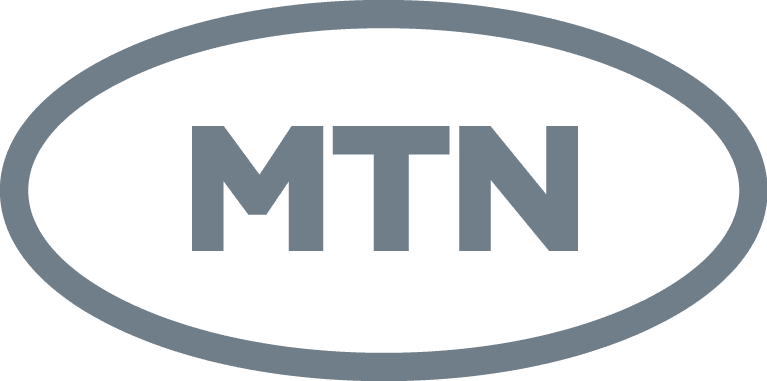Product Management for a hardware product is a combination of accuracy, endurance, and long-term planning. Unlike digital products or software, which can iterate rapidly and update overnight, hardware is a slower process with higher stakes and up-front costs. Products created by early-stage startups can be irreversibly influenced by decisions made at specific times of day and in early stages. It is common for early-stage choices to determine a product’s production process cost structure, user experience and overall viability.
Hardware product managers must manage complex supply chains, adhere to manufacturing timelines, and ensure that engineering meets customer needs. “It’s essential to think about long lead times. to make decisions with actual reality on physical constraints.” Mistakes can be costly (in terms of time and money), so the importance of being a competent Product Manager is even greater.
Navigating the Complexity of Hardware Development
Any type of hardware development is more difficult than software development. There are matter-of-fact things to consider regarding hardware, extended timelines, and a fixed-cost regime that’s not readily adjustable once you’re up and running. In such a scenario, Product Strategy becomes an equilibrium between creativity and feasibility.
Product managers need to closely collaborate with mechanical, electrical, and industrial design engineers to ensure that the product’s vision aligns with technical feasibility. They need to know what goes into selecting materials, sourcing components and assembling the product.’ Every feature and design decision affects cost, manufacturability, or delivery times.
Hardware isn’t like software, where you can push an update overnight, hardware products take weeks or months to prototype and manufacture. It requires early planning and validation. Product Management needs to front-load discovery work and “stress-test” ideas before they get to production. The schedule can easily slip due to supply chain snags or design missteps.
There is also additional complexity introduced by regulatory compliance. The product may also need to comply with safety standards or go through specific country certifications, depending on its type. PM must juggle testing and certification schedules, as well as documentation in preparation for launch.
In other words, Doing Hardware Product Management requires nothing short of discipline, technical comprehension, and long-term vision. Product managers are no longer just overseeing design; they supervise every piece of the product, from concept to shelf, often across international teams and dozens of vendors.
Prioritising Features and Managing Trade-offs
The most critical responsibilities in hardware Product Management are prioritising features against challenging technical and budget limitations. Each hardware addition carries with it considerations of cost, size, weight, power consumption, and reliability. This, in turn, puts the product managers at a point where they must make trade-offs in rivalling the timing of software commits.
No one is in a better position to know which features we should include in the product than this team, as customers won’t deliver them anyway. It’s our job to make trade-offs and innovate, and we need to understand which requests make sense relative to the larger compensation landscape. Adding a sensor or display can improve the user experience, but it may also increase cost or decrease battery life. These trade-offs are present in every hardware product development journey.
Product managers meet with multidisciplinary teams to identify which features will be included in the MVP and which will be held back for future development. Saying No (And backing it up with data) is a critical skill in hardware Product Management.
While software can be modified and features added or removed relatively simply, with hardware, those decisions generally cannot be changed after tooling and production have started. Changes in the late stages are expensive and risky. This further emphasises the importance of early stakeholder alignment and risk assessment.
Good hardware Product Strategy is about delivering the highest amount of customer value within the constraints of (an often extremely constrained) engineering & manufacturing reality. It requires a deep understanding of the user, a solid grasp of technology, and the ability to communicate effectively to both business and technical stakeholders.
Testing, Validation, and Quality Assurance
Quality assurance is a solid staple for Hardware Product Managers. Because you cannot update hardware in customers’ hands, rigorous testing and validation will be necessary long before launch. This is an area where hardware product managers differ most from their software counterparts.
Product managers collaborate with engineering teams to develop test plans that ensure the product’s functionality, durability, and safety for the user. It likely means creating multiple prototypes, performing stress tests, and gathering feedback from internal teams or newsgroup users. Every testing round guides changes in design, materials, or manufacturing processes.
However, while software bugs are often fixed in patches after a product is shipped, boosting warranty costs and damaging the brand’s reputation, hardware defects lead to increased warranty costs, recalls, and brand blemishes. That’s why Product Strategy needs to consider quality assurance as a strategic issue of value to the business, not just a technical issue. The aim is to ensure that what ships is, above all else, reliable, safe, and meets customer expectations.
Regulated sectors also mandate compliance testing. Product Management collaborates with legal and quality assurance to ensure not only that they pass EMC but also all applicable standards, as outlined by the Product Management team.
The testing also supports strategies for risk mitigation. Product managers need to identify these weak links and have strategies in place before production begins. Buffering for unknowns and proactively risk-managing minimises expensive surprises when the same Product Managers still need to deliver a product and keep development on track.
Launching and Scaling a Hardware Product
The hardware product launch is where all the planning and coordination reach full speed. However, unlike digital products, which can scale instantly, hardware products require inventory, logistics, and sales alignment to be effective. For App releases, Product Strategy must have a finger in every pie, and everything from marketing to fulfilment must rely on coordination for an excellent product delivery.
Prediction of demand is significant. On the other hand, creating too few leads results in lost sales. Producing too many locks up capital and storage. Product managers rely on market research, pre-orders, and channel feedback to inform their decisions on production volume. They also have to consider lead times, packaging, customs and distribution channels.”
Product Management, Sales, and Marketing teams collaborate to plan and launch messaging, technical documentation, and marketing programs. Strong value propositions and effective product positioning are key to success in education, both for customers and internal sales.
After launch, support will be crucial. PM tracks customer feedback, returns, and collaborates with CS to promptly address and resolve concerns. In the case of hardware, solutions could include physical replacements or product recalls. There is a support backbone that product managers need to plan for from day one.
As the product takes off, so does Product Management, identifying scalability options, cost efficiency, and new versions to add. This could involve renegotiating with suppliers, exploring alternative materials, and finding better ways to do things. Launching successfully is just the start. Getting to scale well is what transforms a hardware product into a long-term success.
Conclusion
Hardware product management is a practice born out of being a step ahead in timing and cross-functional leadership. It takes the right mindset, one that embraces limitations while still striving for innovation. The thing about hardware is that it has no undo button. Every decision must be purposeful, informed, and aligned with what matters to customers, as well as the realities of the business, including supply chains, engineering timelines, features, quality, and other key factors.
Management of all these things forms the basis of Hardware Product Management and is a diverse role that demands a broader skill set and real-world consequences. Product managers also need to work across multiple disciplines, including mechanical and electrical design, marketing, logistics, and customer support. They also need to be able to communicate effectively, set expectations, and lead with confidence, even under the pressures of extended timelines or challenges that arise.
GET IN TOUCH WITH THE DIGITAL SCHOOL OF MARKETING
Explore product Management success with the Digital School of Marketing. The Product Management Course equips you with essential knowledge and skills to excel in this dynamic field.
Frequently Asked Questions
Product Strategy for hardware is about leading a physical product from idea to market. This involves developing product specifications, collaborating with the engineering and manufacturing teams, managing schedules, and overseeing quality control. Unlike software, hardware products have extended development times, increased production costs, and a one-time opportunity for flexibility after release. Product Strategy here needs to think forward but at the same time, eliminate the risk of screwing things up by the time a product reaches customers, so that once it gets out the door nothing is broken.
Hardware is quite different from software product management due to its fixed timeliness, physical constraints, and manufacturing dependencies. In software, updates and patches are released rapidly, following an iterative process. Hardware Product Strategy involves making design decisions early, testing parts through physical testing, and verifying that production is ready well in advance of launch. Mistakes can be costly and difficult to correct once the product is in customers’ hands.
A successful PM in hardware requires a combination of technical knowledge, project management, and business foresight. Product managers should be able to effectively communicate their needs to designers, engineers, supply chain managers, and other stakeholders. They should understand that materials, sourcing, compliance, and tooling all play a crucial role in product development. Problem-solving, early risk identification, and practical documentation skills are essential for success. Unlike software, where changes are relatively inexpensive, hardware PM is all about getting things right the first time.
Testing is essential in hardware PM because once you go to market, you can’t make any changes. A product defect could lead to recalls, safety issues, or damage to the brand. Product managers work in synchronisation with prototype testing, stress testing, and compliance checking, as well as waiting for final users’ testing to ensure that the product is reliable and safe. They collaborate with engineers and QA teams to create test plans and track performance across each build.
From day one, Product Strategy in hardware needs to be ready to anticipate logistics perfectly. That has been accomplished, including selecting dependable vendors, ordering parts, and building in lead times and shipping downtime. Global events, material shortages and factory backlogs can delay timelines. Product Management mitigates the risks of such by implementing buffer planning, alternative supply strategies, and direct supplier involvement. Product managers bring supply chain thinking to the earliest stages of a product’s planning and execution, ensuring a product can be delivered on time and at scale without sacrificing quality.
Post-launch Product Management is central to the hardware lifecycle. This includes collecting customer feedback, handling product returns or defects, collaborating with customer service, and planning post-launch updates or next-generation versions. For hardware updates, logistics, repair, or replacement may be involved instead of code changes. Product managers drill down on performance data, monitor warranty claims, and drive discussions around product enhancements. Continual tracking ensures product and client success over time and informs future product development decisions.
Blog Categories
You might also like
- Understanding Resource Constraints in Project Management
- The Product Manager’s Role in Competitive Analysis
- The Product Management’s Role in Global Expansion
- The Impact of UX/UI Design on Product Management Success
- The Future of Product Management: Trends to Watch
- Strategies for Prioritizing Projects: Balancing Efficiency and Impact





















